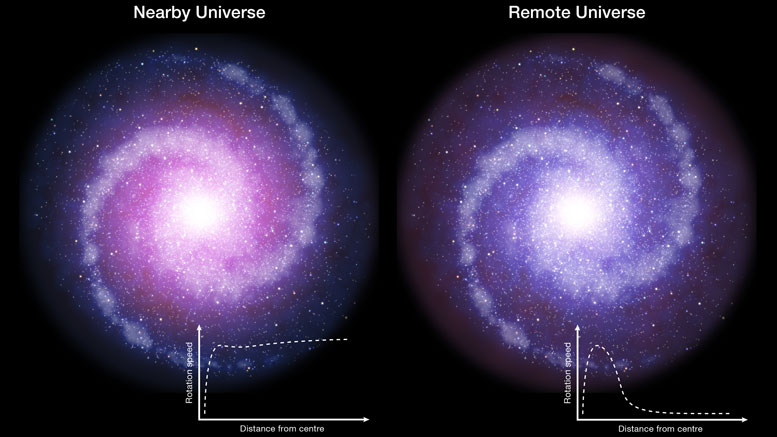
Schematic representation of rotating disc galaxies in the distant Universe and the present day. Observations with ESO’s Very Large Telescope suggest that such massive star-forming disc galaxies in the early Universe were less influenced by dark matter. As a result the outer parts of distant galaxies rotate more slowly than comparable regions of galaxies in the local Universe. Their rotations curves, rather than being flat, drop with increasing radius.
New research reveals that the outer parts of massive disc galaxies 10 billion years ago were rotating less quickly than the spiral galaxies, like the Milky Way, that we see today.
New observations indicate that massive, star-forming galaxies during the peak epoch of galaxy formation, 10 billion years ago, were dominated by baryonic or “normal” matter. This is in stark contrast to present-day galaxies, where the effects of mysterious dark matter seem to be much greater. This surprising result was obtained using ESO’s Very Large Telescope and suggests that dark matter was less influential in the early Universe than it is today. The research is presented in four papers, one of which will be published in the journal Nature this week.
We see normal matter as brightly shining stars, glowing gas, and clouds of dust. But the more elusive dark matter does not emit, absorb or reflect light and can only be observed via its gravitational effects. The presence of dark matter can explain why the outer parts of nearby spiral galaxies rotate more quickly than would be expected if only the normal matter that we can see directly were present.
Now, an international team of astronomers led by Reinhard Genzel at the Max Planck Institute for Extraterrestrial Physics in Garching, Germany have used the KMOS and SINFONI instruments at ESO’s Very Large Telescope in Chile to measure the rotation of six massive, star-forming galaxies in the distant Universe, at the peak of galaxy formation 10 billion years ago.
What they found was intriguing: unlike spiral galaxies in the modern Universe, the outer regions of these distant galaxies seem to be rotating more slowly than regions closer to the core — suggesting there is less dark matter present than expected.
New observations from ESO’s Very Large Telescope have revealed that the outer parts of massive disc galaxies 10 billion years ago were rotating less quickly than the spiral galaxies, like the Milky Way, that we see today. This ESOcast Light summarizes the important points of this discovery and the significance of dark matter, and how it is distributed.
“Surprisingly, the rotation velocities are not constant, but decrease further out in the galaxies,” comments Reinhard Genzel, lead author of the Nature paper. “There are probably two causes for this. Firstly, most of these early massive galaxies are strongly dominated by normal matter, with dark matter playing a much smaller role than in the Local Universe. Secondly, these early discs were much more turbulent than the spiral galaxies we see in our cosmic neighborhood.”
Both effects seem to become more marked as astronomers look further and further back in time, into the early Universe. This suggests that 3 to 4 billion years after the Big Bang, the gas in galaxies had already efficiently condensed into flat, rotating discs, while the dark matter halos surrounding them were much larger and more spread out. Apparently it took billions of years longer for dark matter to condense as well, so its dominating effect is only seen on the rotation velocities of galaxy discs today.
This explanation is consistent with observations showing that early galaxies were much more gas-rich and compact than today’s galaxies.
The six galaxies mapped in this study were among a larger sample of a hundred distant, star-forming discs imaged with the KMOS and SINFONI instruments at ESO’s Very Large Telescope at the Paranal Observatory in Chile. In addition to the individual galaxy measurements described above, an average rotation curve was created by combining the weaker signals from the other galaxies. This composite curve also showed the same decreasing velocity trend away from the centers of the galaxies. In addition, two further studies of 240 star-forming discs also support these findings.
Detailed modeling shows that while normal matter typically accounts for about half of the total mass of all galaxies on average, it completely dominates the dynamics of galaxies at the highest redshifts.
Comparison of rotating disc galaxies in the distant Universe and the present day. The imaginary galaxy on the left is in the nearby Universe and the stars in its outer parts are orbiting rapidly due to the presence of large amounts of dark matter around the central regions. On the other hand the galaxy at the right, which is in the distant Universe, and seen as it was about ten billion years ago, is rotating more slowly in its outer parts as dark matter is more diffuse. The size of the difference is exaggerated in this schematic view to make the effect clearer. The distribution of dark matter is shown in red.
References:
“Strongly baryon-dominated disk galaxies at the peak of galaxy formation ten billion years ago” by R. Genzel, N. M. Förster Schreiber, H. Übler, P. Lang, T. Naab, R. Bender, L. J. Tacconi, E. Wisnioski, S. Wuyts, T. Alexander, A. Beifiori, S. Belli, G. Brammer, A. Burkert, C. M. Carollo, J. Chan, R. Davies, M. Fossati, A. Galametz, S. Genel, O. Gerhard, D. Lutz, J. T. Mendel, I. Momcheva, E. J. Nelson, A. Renzini, R. Saglia, A. Sternberg, S. Tacchella, K. Tadaki and D. Wilman, 16 March 2017, Nature.
DOI: 10.1038/nature21685
PDF
“Falling Outer Rotation Curves of Star-forming Galaxies at 0.6≲ z ≲ 2.6 Probed with KMOS3D and SINS/zC-SINF” by Philipp Lang, Natascha M. Förster Schreiber, Reinhard Genzel, Stijn Wuyts, Emily Wisnioski, Alessandra Beifiori, Sirio Belli, Ralf Bender, Gabe Brammer, Andreas Burkert, Jeffrey Chan, Ric Davies, Matteo Fossati, Audrey Galametz, Sandesh K. Kulkarni, Dieter Lutz, J. Trevor Mendel, Ivelina G. Momcheva, Thorsten Naab, Erica J. Nelson, Roberto P. Saglia, Stella Seitz, Sandro Tacchella, Linda J. Tacconi, Ken-ichi Tadaki, Hannah Übler, Pieter G. van Dokkum and David J. Wilman, 12 May 2017, The Astrophysical Journal.
DOI: 10.3847/1538-4357/aa6d82
PDF
“The Evolution of the Tully–Fisher Relation between z ∼ 2.3 and z ∼ 0.9 with KMOS3D∗” by H. Übler, N. M. Förster Schreiber, R. Genzel, E. Wisnioski, S. Wuyts, P. Lang, T. Naab, A. Burkert, P. G. van Dokkum, L. J. Tacconi, D. J. Wilman, M. Fossati, J. T. Mendel, A. Beifiori, S. Belli, R. Bender, G. B. Brammer, J. Chan, R. Davies, M. Fabricius, A. Galametz, D. Lutz, I. G. Momcheva, E. J. Nelson, R. P. Saglia, S. Seitz, and K. Tadaki, 22 June 2017, The Astrophysical Journal.
DOI: 0.3847/1538-4357/aa7558
PDF
“KMOS3D: DYNAMICAL CONSTRAINTS ON THE MASS BUDGET IN EARLY STAR-FORMING DISKS*” by Stijn Wuyts, Natascha M. Förster Schreiber, Emily Wisnioski, Reinhard Genzel, Andreas Burkert, Kaushala Bandara, Alessandra Beifiori, Sirio Belli, Ralf Bender, Gabriel B. Brammer, Jeffrey Chan, Ric Davies, Matteo Fossati, Audrey Galametz, Sandesh K. Kulkarni, Philipp Lang, Dieter Lutz, J. Trevor Mendel, Ivelina G. Momcheva, Thorsten Naab, Erica J. Nelson, Roberto P. Saglia, Stella Seitz, Linda J. Tacconi, Ken-ichi Tadaki, Hannah Übler, Pieter G. van Dokkum, David J. Wilman, and Eva Wuyts, 3 November 2017, The Astrophysical Journal.
DOI: 10.3847/0004-637X/831/2/149
PDF

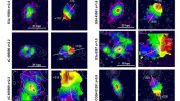
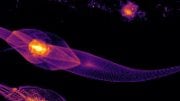

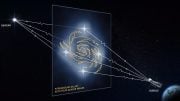
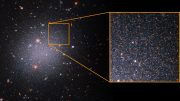
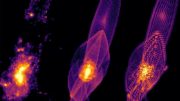
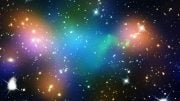
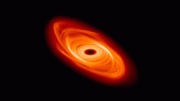
Be the first to comment on "ESO Observations Show Dark Matter Less Influential in Galaxies in Early Universe"